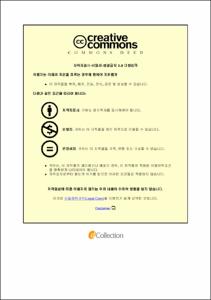도시형생활주택 위험성 분석을 통한 화재영향평가제도 도입방안에 관한 연구
- Abstract
- It seems to be difficult to secure fire safety by only fire preventing facilities because a cause of modern fire varies such as architectural structures and use patterns. In order for fire safety to be guaranteed by enacting and revising FIRE CODE reflecting fire hazard characteristics and user’s characteristics, the introduction of fire impact assessments need to be timely considered to be adopted but these second trials have failed so far.
On this study, the fire case of city-typed housing was surveyed to introduce fire impact assessments and the research on the actual condition and fire evacuation simulation of city-typed housing built in Su-young, Nam district were analysed.
And necessity, procedures and implementation method of fire impact assessments was questioned and tested by the fire expert and architecture.
On the basis of these facts, introduction of fire impact assessments should be absolutely adopted and fire department and fire-code are firmly eligible to implement fire impact assessments therefore fire code need to be enacted or revised in accordance with new fire environment and fire safety system need to be built up.
Consequently aggressive promotion through public hearing on necessity of fire impact assessments, consensus among departments and fostering expert to carry out fire impact assessments are the core.
- Issued Date
- 2016
- Awarded Date
- 2016. 2
- Type
- Dissertation
- Publisher
- 부경대학교 산업대학원
- Affiliation
- 부경대학교 산업대학원
- Department
- 산업대학원 소방공학과
- Advisor
- 최준호
- Table Of Contents
- 제 1 장. 서 론 1
1.1 연구의 배경 및 목적 1
1.2 연구의 범위 및 방법 4
제 2 장. 도시형생활주택의 개요 및 화재발생 추이 6
2.1 도시형생활주택의 개요 6
2.1.1 도시형생활주택의 개념 및 유형 6
2.1.2 도시형생활주택의 인‧허가 기준 및 현황 7
2.1.3 도시형생활주택의 건축허가처리 흐름도 9
2.1.4 도시형생활주택의 법령 개정 과정 11
2.2 도시형생활주택의 화재발생 통계 13
2.2.1 연도별 화재발생 현황 13
2.2.2 연도별 사망자 현황 13
2.2.3 연도별 화재피해액 현황 14
2.3 도시형생활주택 화재사례 분석 15
2.3.1 화재발생 개요 및 연소확대 원인 15
2.3.2 화재대응 소방활동사항 23
2.3.3 문제점 및 개선대책 25
2.3.4 화재관련 쟁점사항 검토 29
제 3 장. 도시형생활주택 실태조사 및 화재․피난시뮬레이션 분석 31
3.1 도시형생활주택 실태조사 31
3.1.1 조사대상의 선정 및 실시기간 31
3.1.2 조사도구의 구성 및 분석방법 31
3.1.3 실태조사 분석 32
3.1.4 문제점 도출 39
3.2 도시형생활주택 화재시뮬레이션 분석(Fire Dynamics 42
3.2.1 시뮬레이션 대상 개요 42
3.2.2 시뮬레이션 시나리오 및 측정지점 43
3.2.3 화재시뮬레이션(FDS) 결과 48
3.3. 피난시뮬레이션(Pathfinder) 53
3.3.1. 피난시뮬레이션 입력요소 53
3.3.2. 피난시뮬레이션 시간대별 피난상황 55
3.3.3 필요안전시간(Require Safety Egress Time : RSET) 58
3.3.4 화재위험성평가 최종 결과 분석 60
제 4 장. 화재영향평가 전문가 설문조사 및 실물 모의평가 61
4.1 화재영향평가제도 개요 61
4.1.1 화재영향평가제도의 도입 추진 배경 61
4.1.2 화재영향평가의 도입 진행과정 62
4.1.3 화재영향평가와 성능위주설계 비교 65
4.2 화재영향평가 전문가 설문 조사 68
4.2.1 조사기간 및 방법 68
4.2.2 조사도구 구성 및 분석방법 69
4.2.3 화재영향평가제도의 도입 필요성(설문1) 70
4.2.4 화재영향평가 수행방식과 절차(설문 2) 74
4.3 실물 모의평가 79
4.3.1 조사대상 개요 및 조사도구의 구성 79
4.3.2 화재영향평가 실물모의 평가 80
4.3.3 화재영향평가 평가표 및 결과 84
제 5 장. 결 론 88
참 고 문 헌 91
부록 93
- Degree
- Master
- Files in This Item:
-
-
Download
 도시형생활주택 위험성 분석을 통한 화재영향평가제도 도입방안에 관한 연구.pdf
기타 데이터 / 7.77 MB / Adobe PDF
도시형생활주택 위험성 분석을 통한 화재영향평가제도 도입방안에 관한 연구.pdf
기타 데이터 / 7.77 MB / Adobe PDF
-
Items in Repository are protected by copyright, with all rights reserved, unless otherwise indicated.